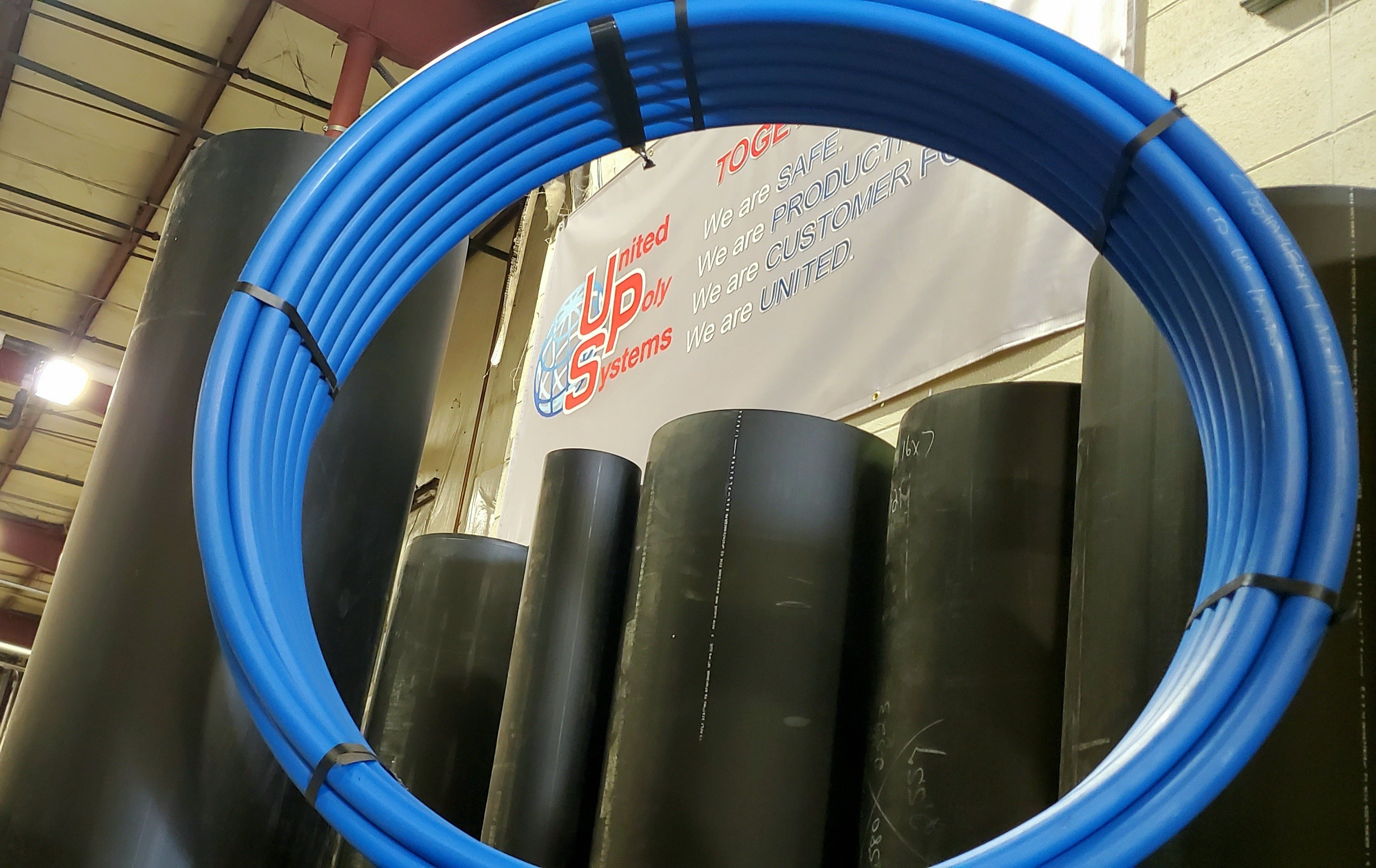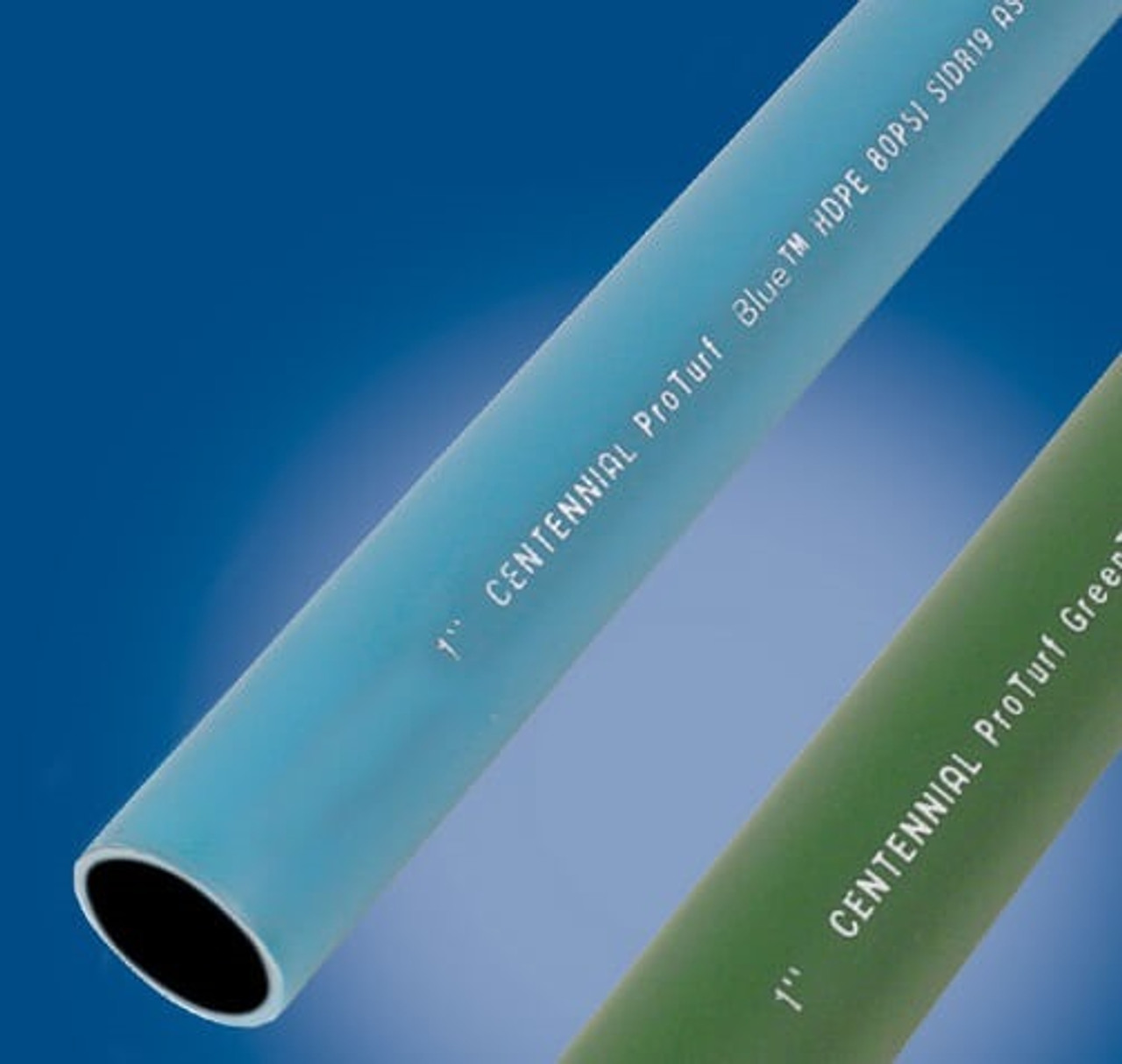Reasons Why hdpe pipe in stock Midland TX Is Valuable for Local Industries
Discover the Manufacturing Refine Behind High-Quality HDPE Pipe and Its Applications
The manufacturing process of high-grade HDPE pipes is complex and systematic. It begins with the choice of basic materials that boost efficiency. Following this, ethylene undertakes polymerization to create resin, which is then shaped with extrusion. Quality control is vital, guaranteeing that the end product meets stringent standards. The trip of HDPE pipelines doesn't end with production. Their applications throughout different industries reveal a broader importance worth taking a look at.
Comprehending HDPE: Qualities and Advantages

High-density polyethylene (HDPE) is a flexible polycarbonate known for its durability and resistance to different ecological elements. This product displays excellent tensile strength, making it appropriate for demanding applications. Its low-density framework adds to a light-weight product, facilitating simplicity of dealing with and installation. HDPE likewise showcases remarkable resistance to chemicals, which lessens deterioration when revealed to rough substances.
The material's low wetness absorption further improves its longevity, making it excellent for use in pipes and tank. Additionally, HDPE is resistant to ultraviolet (UV) radiation, making certain that products keep their integrity even when exposed to sunshine. Its flexibility enables for the production of intricate shapes without jeopardizing stamina. The environmentally friendly nature of HDPE, often obtained from recycled products, includes in its charm, promoting lasting methods in production. Overall, these properties and benefits make HDPE a recommended selection for various industrial and consumer applications.
Resources Choice for HDPE Production
The choice of resources for HDPE production is vital to verify the end product fulfills the desired specifications and quality standards. High-density polyethylene (HDPE) is primarily created from polymerized ethylene, acquired from fossil gas such as gas or petroleum. The top quality of these feedstocks considerably affects the mechanical and thermal homes of the last HDPE.
Additives also play a substantial role in enhancing HDPE's performance, consisting of antioxidants, UV stabilizers, and colorants, which boost sturdiness and resistance to ecological variables. The selection procedure need to think about not only the chemical structure of the raw products but additionally their processing characteristics to ensure efficient production.
The sourcing of raw products ought to focus on sustainability and conformity with environmental regulations, as accountable techniques are imperative in today's market. Eventually, careful resources selection lays the structure for producing high-grade HDPE pipes ideal for varied applications.
The Extrusion Refine: Shaping HDPE Pipeline
The extrusion procedure plays a crucial function fit HDPE pipes, starting with thorough material prep work strategies that guarantee suitable circulation and consistency. Equally essential is the layout of the die, which straight influences the final dimensions and surface area top quality of the pipe. With each other, these elements contribute greatly to the efficiency and top quality of HDPE pipe production.
Product Prep Work Strategies
Efficient manufacturing of HDPE pipelines starts with meticulous material preparation strategies, especially the extrusion process. Throughout this stage, high-density polyethylene resin is first dried to get rid of moisture, guaranteeing suitable circulation attributes. The material is after that fed right into the extruder, where it goes through home heating and melting, transforming into a viscous state. This heating process is thoroughly controlled to maintain the material's honesty and efficiency. The molten HDPE is required through a die, forming it right into a continuous pipeline kind. Appropriate temperature management during extrusion is crucial, as it straight influences the product's properties and the last item high quality. When shaped, the HDPE pipe is cooled and reduced to specified lengths, prepared for succeeding processing and applications.
Die Layout Relevance
Accuracy in die design plays a crucial duty in the extrusion process of HDPE pipelines. The die functions as the final shaping tool, straight influencing the pipeline's dimensions, wall surface density, and surface coating. A properly designed die warranties uniform product flow, decreasing problems such as irregularities and vulnerable points. The geometry of the die should be optimized to accommodate the details properties of HDPE, including its viscosity and thermal actions during extrusion. Additionally, the cooling price of the material as it travels through the die can markedly influence the pipe's architectural integrity. As a result, buying advanced die innovation is vital for makers aiming to generate premium HDPE pipelines that meet sector requirements and consumer expectations.
Top Quality Control Measures in HDPE Manufacturing
Although various variables affect the high quality of HDPE pipe production, reliable quality assurance actions are important to ensure uniformity and reliability in the last item. Key quality control practices include strenuous product assessment, verifying that the raw polyethylene meets recognized standards for pureness and thickness. During the extrusion process, parameters such as temperature level, stress, and cooling time are carefully checked to maintain dimensional precision and structural integrity
Furthermore, post-production screening is essential; manufacturers often conduct hydrostatic tests to evaluate the pipe's strength and resistance to stress. Visual inspections for surface area issues further boost quality control. Accreditation from appropriate standards companies, like ASTM or ISO, offers an added layer of reliability. By executing these thorough high quality control measures, makers can lessen problems, enhance efficiency, and guarantee that the HDPE pipes fulfill the particular needs of various applications, eventually resulting in consumer complete satisfaction and trust fund in the product.
Applications of HDPE Pipeline Across Industries
HDPE pipelines are made use of across different markets as a result of their longevity and adaptability. In water circulation systems, they ensure reliable shipment, while in wastewater check here administration, they supply trusted services for waste transport. In addition, farming watering networks benefit from HDPE's resistance to corrosion and versatility, making it an ideal selection for modern farming practices.

Water Distribution Solutions
A substantial number of industries count on high-density polyethylene (HDPE) pipes for efficient water circulation systems. Understood for their resilience and resistance to rust, HDPE pipelines are commonly utilized in community water supply networks, farming watering, and commercial applications. Their lightweight nature helps with simple handling and installment, reducing labor prices and time. Furthermore, HDPE pipelines can suit various pressure degrees, making them appropriate for both reduced and high-pressure systems. American Plastics HDPE Pipe Manufacturing. The adaptability of the product allows for seamless assimilation right into existing framework, reducing the requirement for substantial excavation. Moreover, HDPE's resistance to chemical seeping assurances that the water supplied remains secure and tidy, making it a suitable choice for preserving the top quality of safe and clean water across various sectors
Wastewater Monitoring Solutions
Efficient water circulation systems also lead the way for cutting-edge wastewater administration remedies, where high-density polyethylene (HDPE) pipes play a considerable duty. Distinguished for their resilience and resistance to rust, HDPE pipelines are excellent for transporting wastewater in numerous settings. Their flexibility enables very easy installment in complex atmospheres, lessening the requirement for considerable excavation. Furthermore, HDPE's smooth indoor surface area lowers rubbing, boosting circulation rates and performance. These pipes are additionally immune to chemical leaching, making sure that impurities do not jeopardize the surrounding setting. Industries, municipalities, and treatment facilities significantly depend on HDPE pipes for their dependability and long life, making them a recommended option for modern wastewater monitoring systems. This flexibility highlights the vital importance of HDPE pipelines throughout numerous applications.
Agricultural Watering Networks
Agricultural irrigation networks profit greatly from the use of high-density polyethylene (HDPE) pipelines, which give effective and dependable water distribution to crops. HDPE pipelines are lightweight, making them simple to move and mount, while their adaptability enables various arrangements in diverse surfaces. These pipelines demonstrate superb resistance to rust, chemicals, and UV radiation, guaranteeing longevity in rough agricultural settings. Additionally, their smooth interior surface minimizes friction loss, maximizing water circulation and decreasing energy costs connected with pumping. The durability of HDPE pipelines, frequently going beyond 50 years, adds to decrease maintenance and replacement costs. Farmers increasingly rely on HDPE pipes to enhance irrigation performance and promote sustainable farming practices, eventually leading to boosted plant returns and resource preservation.

Future Fads in HDPE Pipe Modern Technology
As the demand for sustainable and effective infrastructure expands, advancements in HDPE pipeline technology are poised to transform different industries. Arising trends include the assimilation of smart innovations, such as sensing units and IoT capabilities, which assist in real-time surveillance of pipe conditions, decreasing upkeep prices and preventing leaks. Furthermore, the advancement of innovative production strategies, such as 3D printing, is enabling the production of complicated, tailored pipeline layouts that accommodate specific task requirements.
The emphasis on recycling and circular economic climate methods is driving the development of HDPE pipes made from recycled materials, enhancing sustainability. Boosted jointing methods, such as electro-fusion and mechanical installations, are additionally enhancing setup efficiency and reliability. Finally, the expanding focus on environmental guidelines is pushing makers to embrace greener production procedures, making sure that HDPE pipes not only meet sector requirements yet also cultivate an even more sustainable future for framework development.
Regularly Asked Concerns
How Does HDPE Compare to Other Plastic Products?
HDPE outshines numerous various other plastic materials concerning resilience, chemical resistance, and adaptability. Its low thickness and high tensile toughness make it perfect for numerous applications, usually surpassing choices in both performance and long life.
What Are the Environmental Influences of HDPE Manufacturing?
The environmental effects of HDPE production consist of greenhouse gas discharges, energy usage, and possible contamination from manufacturing processes. Furthermore, inappropriate disposal can result in soil and water contamination, elevating issues regarding lasting ecological effects.
Can HDPE Pipeline Be Reused?
Yes, HDPE pipelines can be reused. Many facilities approve utilized HDPE for processing, changing it right into brand-new products. This reusing adds to sustainability efforts, minimizing plastic waste while saving sources and energy in the production cycle.
What Is the Life-span of HDPE Pipes?

How Do Temperature Level Variations Impact HDPE Pipe Efficiency?
Temperature level variations significantly influence HDPE pipeline efficiency, impacting adaptability and strength. Heats can cause softening, while low temperature levels might create brittleness, ultimately affecting the pipeline's toughness and suitability for different applications in diverse environments.